- Motorcycles
- Car of the Month
- Destinations
- Men’s Fashion
- Watch Collector
- Art & Collectibles
- Vacation Homes
- Celebrity Homes
- New Construction
- Home Design
- Electronics
- Fine Dining
- Aston Martin
- Les Marquables de Martell
- Mira Villas
- Panther National
- Reynolds Lake Oconee
- Wynn Las Vegas
- 672 Wine Club
- Sports & Leisure
- Health & Wellness
- Best of the Best
- The Ultimate Gift Guide

Boat of the Week: This Classic 70-foot ‘Gentleman’s Yacht’ Is All High-Tech Beneath Its Wooden Skin
The spirit p70 looks like a boat from the 1930s, but its list of modern technologies includes lithium batteries to power the house systems., howard walker, howard walker's most recent stories.
- This 112-Foot Superyacht Has an Interior That’ll Make Your Manhattan Condo Jealous
- This 1967 Shelby GT500 Has Been Reimagined to Perfection. Now It’s up for Grabs.
- One of Ferrari’s Earliest Formula 1 Cars Is Now Up for Grabs
- Share This Article

Spirit Yachts ’ flagship P70 may look like an extra from The Great Gatsby , but this oh-so-elegant wooden motoryacht, with its gleaming mirror-varnished mahogany and classic flag-blue paint, is new from the keel up.
The 71-footer was built by Britain’s Spirit Yachts for an experienced Norwegian owner who fell in love with the timeless lines of the company’s classic wooden sailboats, but wanted the style to translate to a powered yacht.
Related Stories
Inside the ritz-carlton’s new luxury cruise liner launching this fall.
- Lamborghini and Technics Just Teamed Up on New Turntable and LP
- The Billionaire Space Race Is About to Heat Up Again—Here’s What You Need to Know
If the Spirit name sounds familiar, this was the builder that has enthusiastically supplied yachts for Daniel “007” Craig to sail in those epic James Bond romps Casino Royale, and the newest, No Time to Die.

Note the beautiful grain of the quarter-sawn sapele mahogany on the exterior. Courtesy Spirit Yachts
But according to Sean McMillan, Spirit Yachts founder and chief designer, the owner didn’t simply want a classic-looking cruiser with a retro Roaring Twenties vibe that would sit at a marina. He wanted a boat that could go places. “The brief was to build a motoryacht capable of cruising from Britain’s south coast, across the North Sea to the Baltic and on to Norway, at an average speed of 18 knots. And he wanted the boat to go there and back—that’s over 1,000 miles—without having to refuel,” McMillan told Robb Report .
To meet the challenge, McMillan and a dedicated team of eight woodworking craftsmen, turned to the same wooden boatbuilding techniques they use to craft Spirit’s range of classic sailboats, including the recently launched 111-foot masterpiece Geist . That involved creating a framework using tough sapele hardwood. To this, longitudinal strips of Douglas fir were screwed and bonded to build the hull shape. Then, on top of this, multiple layers of Japanese kaya wood were glued diagonally to deliver carbon-fiber levels of strength and rigidity.
“It creates a hull that is immensely strong and light. The P70 weighs just 24 tonnes, which is almost half the weight of similar-sized fiberglass counterparts,” explains McMillan.

The lines have a retro feel, but the boat was designed to be a fast ocean-runner, capable of reaching 29 mph, but able to run in rough seas. Courtesy Spirit Yachts
Lighter weight also allowed smaller than usual engines to be mounted in the P70’s over-sized engine room. The twin 800-hp six-cylinder MAN turbo diesels are capable of delivering a top speed of 29 mph, with cruising at a more relaxed 20 mph.
Without doubt, it’s the lines of this timelessly elegant 1930s-style “gentleman’s” motoryacht that sets it apart. But the process of creating such a head-turning profile wasn’t easy. The owner, a highly experienced and knowledgeable boater, had firm ideas on what he wanted. It resulted in McMillan modifying the design more than a dozen times.
“He really liked the style of some of the Spirit power boats I’ve designed over the years. So, we combined the flared bow and tumblehome stern from our Spirit P40 with the 1930s style of our sailing yachts, and applied it to a larger motoryacht design,” he explains.

The main salon. Courtesy Spirit Yachts
The result is nothing less than a piece of floating art, with a classic slender waist—the beam spans just 16.5 feet—and that tall, proud bow. And there are some lovely classic design features, like the stainless-steel engine vents on the cabin sides that were inspired by those from a classic ‘50s Mercedes-Benz 300SL.
“To keep the sleek, uncluttered look, we did away with the typical stainless handrails, and lowered the level of the deck to make it safe and easy to walk around the yacht,” says McMillan.
Below decks, the slightly unconventional layout requested by the owner includes a central wheelhouse, a rich, leather-lined salon area forward, and a spacious galley and dining area aft. And on the lower levels, the master suite is in the bow with twin guest cabins at the stern.

The outer helm on the flybridge leads into the main wheelhouse a few steps down. Courtesy Spirit Yachts
The quality and attention to detail are exceptional. You can understand why it took a team of three painters almost seven months to varnish the bare-wood interior. From start to finish, building the yacht at Spirit’s yard in Ipswich, on Britain’s east coast, took almost three years.
But while the P70 looks classic and elegant in its design, beneath the skin it’s packed with some of the latest maritime technology. That includes a bank of lithium-ion batteries that can power the yacht’s air conditioning and zero-speed stabilizers while at anchor overnight, without cranking-up the generator.
“Wooden motoryachts like this are the future,” says McMillan. “They’re light, sustainable, have a great strength-to-weight ratio, are highly fuel-efficient, and, as our P70 shows, can be turned into things of real beauty.”

It took three painters seven months to varnish the interior. Courtesy Spirit Yachts
The price of a new P70 starts at £4 million, or roughly $5.5 million.
Read More On:
- Motor Vessel
- Sailing Yacht
More Marine

Custom Line Just Unveiled a New 127-Foot Superyacht in Venice—and We Got a First Look

This New 80-Foot Explorer Catamaran Has a Roof That Doubles as a Helipad

This Sleek New 55-Foot Carbon-Fiber Yacht Looks Like a Spaceship for the High Seas

Culinary Masters 2024
MAY 17 - 19 Join us for extraordinary meals from the nation’s brightest culinary minds.
Give the Gift of Luxury
Latest Galleries in Marine

Ritz-Carlton Ilma Superyacht in Photos

The 10 Best Explorer Yachts for High-Seas Adventures
More from our brands, queen camilla will no longer ‘procure fur’ for her wardrobe, peta u.k. announces, roku-mlb highlights free sports streaming as fubo, others dive in, disney is ‘pretty dramatically’ reducing spending on traditional tv content, ceo iger says, henry taylor, art in america’s winter 2023 cover artist, on painting his 65th birthday, the best yoga mats for any practice, according to instructors.
REALISING THE DREAM
Spirit Yachts’ flagship modern classic motor yacht, the Spirit P70, was designed for an experienced motor yacht customer who requested an owner-driven yacht capable of cruising 1,000nm at an average of 18 knots across the North Sea without having to refuel. As with all Spirit yachts, the P70 has been completely customised to suit the owner’s itinerary and criteria.
As with all Spirit designs, the interior layout and deck configuration of a P70 can be customised to suit an owner’s criteria and cruising itinerary.
The owner outlined he wanted to keep the yacht in the UK and cruise to the Baltic in the summer, so the she had to be capable of undertaking long passages in comfort but aesthetically stay true to Spirit’s timeless style and classical elegance. He liked the design of the existing Spirit power boats, so the design team combined the flared bow and tumblehome stern from the P40 with the 1930s-style of Spirit’s sailing yachts and applied it to a larger motor yacht design. Deep bulwarks were added to allow guests to move around the decks safely, particularly when underway out at sea.
SPIRIT P70 AT A GLANCE
Specification & features.
- L.O.A 71' 0" / 21.7m
- L.W.L 68' 3" / 20.8m
- Beam 16' 5" / 5.0m
- Draft 5' 7" / 1.7m
- Displacement 24 tonnes
- Propulsion 2x 800hp diesel shaft drive
- Speed Max 25kn – Cruise 18kn
- Range (at cruise, flat seas) 1,000nm
- Fuel 10,000L
- Water 1,200L
- RCD Category A (F8 winds 4m waves)
- RCD Max Persons 10
TIMELESS ELEGANCE
Spirit Yachts’ contemporary, elegant design style is world renowned. Subtle variations on 1930s classic yacht design with long overhangs, low profiles and smooth lines, married to contemporary underwater profiles, are synonymous with Spirit’s modern classic performance yachts.
Spirit Yachts are designed to be as beautiful in 100 years as they are today.
SIMILAR YACHTS
Spirit p35 e.f, make an enquiry.
" * " indicates required fields
Yachting Monthly
- Digital edition

Bowsprit power for downwind sailing
- Graham Snook
- December 30, 2020
Bowsprits are all the fashion on new boats these days, but do you need one? Graham Snook looks at how a bowsprit can make your sailing easier and faster

Walk down any marina or boat show pontoon and you could be for thinking there was some sort of nautical jousting competition afoot.
Older yachts too can get in on the act with retrofitted deck-mounted retractable bowsprits, but do you really need one and do they improve performance?
There’s nothing new about bowsprits – sailing ships have been using them for centuries as a means of creating more real estate from which to fly canvas as well as to balance a vessel’s rig – but they are more popular on cruising yachts than ever before.

Permanent bowsprits are often built with integral bow rollers
With advancements in sail-handling technology, a furling spinnaker can now be set up in port by one person and stay rolled up until it’s ready to be used.
At that point, it’s a case of unfurling it, sheeting in, and you have a spinnaker!
Taking it down is almost as easy: ease the sheet and take in on the furling line until the sail is neatly rolled away and perfectly tamed, a feat that would have been unmanageable by a single cruising sailor a few decades ago.
Why so popular?

Older masthead rigs tend to have large overlapping genoas, which are less efficient upwind
Their popularity has mostly been brought about by modern yacht design and the quest for better accommodation.
The IOR rules of the 70s did much to determine hull shape, but the demand for more space and accommodation has changed yachts forever.
One big difference is the rig.
Gone are the stumpy masthead rigs and vast overlapping genoas encouraged by the IOR without penalty, which have been replaced by tall, efficient high aspect ratio rigs.
The increase of popularity in cruising, and the lack of rules constraining it, gave designers a free hand.
Mast sections and materials became lighter and stronger, enabling rigs to go higher.
By moving the mast forward in the boat, it enabled designers to open up the saloon, and by moving the chainplates outboard and attaching them directly to the hull, eliminated the need for tie rods that eat into accommodation, increasing the feeling of space below while also reducing manufacturing costs.
Over the last 15 years bows have become less raked and more vertical.
This change has improved performance as the static waterline length and forward buoyancy in the hull have increased.
On deck, things weren’t as rosy for the cruising yachtsman.
Plumb bows and anchors are not good bedfellows, as anchors seem to be as attracted to them as curious hands are to ‘wet paint’ signs.
In no time there were battle-scarred bows all around the world.
To right this wrong, bow rollers started protruding forward.
Outboard chainplates reduce the loads on the mast and rigging, but to get good windward performance the sheeting angle has to be as small as possible.

Modern high aspect ratio rigs sail better upwind, but lack power off the wind
Clearly this conflicts with an overlapping genoa which has to go outboard of the shrouds.
Leading the sheet through the shrouds improves the sheeting angle, but spreaders still prevent an overlapping genoa from being used.
With the high aspect ratio rigs and the increased ‘I’ measurement (foretriangle height), and a reduction in the J (foretriangle base) jibs went from being 150-130% of the foretriangle down to 110% or less.
Not only did this increase upwind performance with more efficient sail shapes, it also made sail handling easier:
A shorter foot can be tacked faster as half of the sail doesn’t have to be dragged around the front of the mast before being sheeted in – 90% headsails have the advantage that they can also be self-tacking.
This is wonderful when tacking upwind, but in light winds, and when sailing off-wind, you start paying the penalty for reduced sail area.
A narrow headsail loses more power at the head of the sail as the leech falls away and it is increasingly blanketed by the larger mainsail the further off the wind you sail.
This is where bigger off-wind sails became popular and, necessary.

Continues below…

Experts tips for downwind sailing
Download our comprehensive step-by-step guides to using spinnakers and cruising chutes

A Pontos winch could change the way you sail
Basic winch design has changed little since the 1970s, but change is here. Graham Snook travelled to St Malo in…

Monohull or multihull: which is best for blue water?
As former editor of Yachting World, David Glenn has plenty of experience of both monohull and multihull cruising. Here he…
Sails for bowsprits
On older yachts with larger headsails that could be poled out, it was easy to forget the colourful but unruly spinnaker – many kites lived their life under the forward berth, used only when there are crew in abundance or on a perfect day.
Some are put off by the hassle of setting it up, others may have had bad experiences and been put off.
But with many owners opting for a more manageable headsail of 135% – to make tacking easier and reduce the need for early reefing – the lack of sail area is noticeable.
Those with a smaller headsail area, found an easy-to-use downwind sail was needed.
Asymmetric (A-sail) spinnaker

A removable bowsprit creates space for more sail area, and keeps it clear of the genoa
Unlike a symmetrical spinnaker that requires a pole to take the load from the tack and the guy, an asymmetric (A-sail) can simply be flown by attaching the halyard and sheets, with its tack taken to a fixed point forward on the yacht.
With the bow roller now sticking out ahead of the bow it made the perfect location to attach one – although many needed to be reinforced to take the upward load as they were originally designed only for the downward load of the anchor chain.
When furling systems became smaller, by using a single continuous line and the advent of the top-down furler, it sped up the demise of the symmetric spinnaker.
Although symmetrical spinnakers are better for sailing dead downwind, once rigged, a furling asymmetric can be set, gybed and furled by one person, all from the safety and comfort of the cockpit.
The crew no longer had to dance around on a rolling foredeck, wielding a long pole while shouting instructions back to the cockpit – guidance, if needed could be spoken to the person next to you.

A symmetrical spinnaker offers the most sail area for dead downwind, but is more complex to rig

An asymmetric spinnaker has a loose luff and large area for offwind sailing
The downside of furlers is that they are expensive.
However, they are quality bits of kit that enable you to extinguish a sail with the pull of a rope.
The cheaper alternative is a snuffer or sock, but this requires someone to go forward when launching or recovering the sail and it can’t be left in position when not in use.
As bows became more vertical so did pulpits, so a line from the top of the mast could go to the bow roller without fouling the pulpit.
But on many older yachts, that had pulpits inclined forwards, to gain the clearance from the genoa furling drum they needed a bowsprit.
To get the best performance advantage from your sail, the bowsprit needs to protrude forward of the genoa as much as practicable, while still retaining the support needed to take the loads.
Taking it to the maximum
Some yacht designs, notably J-Boats, take this to the maximum with their retractable carbon-fibre bowsprit.
Others, like Fauby, have an inclined bow and have a reinforced raised fitting in the pulpit to take extra sails.
A smaller headsail area (in newer and older yachts) means if you’re trying to sail in less than around 10-12 knots of true wind, it’s time for the engine.
It’s at this time sailing folk of the 1970s would be heaving the large but lightweight ghosting headsail on deck.
Nowadays, we have furling genoas, and changing headsails is usually only performed on racing yachts or during a storm.
This is where we turn to the Code Zero.

A Code Zero has a straight luff and is flatter cut for sailing closer to the wind
A Code Zero is technically a racing sail, but Code Zero-style sails are popping up, as many sailmakers have their take on it and now the moniker covers sails that are usually flown on an internal luff rope, although various sailmakers have followed Elvstrøm’s lead with a cableless Code Zero.
While aimed primarily at the racing market, the lack of a torsion cable around which the sail is furled reduces weight and stowed size, and allows the luff to project further forward when halyard tension is slightly eased.
Code Zero sails are usually lightweight nylon or mylar and are furled and stowed while not in use.
They aren’t intended to live rigged for longer than they are in use.
One exception is Crusader Sails’ Super Zero aimed directly at the cruising market, which is made from laminate cloth and has a UV sacrificial strip material so it can be rigged at the start of your cruise and removed at the end.
Because of the loads and the luff rope within, a Code Zero will often require a bobstay from the end of the sprit to a point just above the knuckle of the bow to help the bow roller or bowsprit take the loads.
How furling asymmetric spinnakers work

Most furling asymmetric systems work in a fashion known as a top-down furling.
A shallow furling drum that accepts a continuous line is attached to the bow or bowsprit.
On top of the drum is a swivel to which the tack of the sail attaches; this swivel can rotate independently of the drum.
The furling drum is fixed to a torsion rope (one designed not to twist), and the head of sail is fixed to the top of this, above which a swivel connects the torsion rope to the halyard.
When the sail is ready to be furled, the sheet is eased and the furling line is pulled and the drum rotates.
Because the tack of the sail is on a swivel the rotating drum does not affect it, but turns the torsion rope, which starts the furl at the top of the sail.
As you continue to pull on the furling line, the sail is wrapped around the torsion rope and tamed from the top down until the whole sail is furled and the furling line can be cleated off.
Often a patch of velcro on the sail’s clew will help prevent the furls unfurling.
The luff of the A-sail has to be short enough not to hang down over the furler, and have a shallow enough draft to allow it to roll away.
Therefore, using an existing asymmetric and converting it to a furling asymmetric may be impossible.
With some furling asymmetric systems, such as Crusader Sails’ ‘Magic Furl’ system, the furling sail is pulled onto the torsion rope by lines attached to the luff of the sail at intervals up the luff.
Pulling the furling rope pulls these grab-lines, wrapping them, and then the sail, around the torsion rope.
Off-wind sail for bowsprits

Asymmetric sails (A-sails) benefit from longer bowsprits – something that has been known in the dinghy and sportsboat world for decades – as it enables them to sail deeper downwind and the sail is less blanketed by the mainsail and has a more usable sail area.
A-sails cover many different styles of loose luff asymmetric spinnakers for use from 60-170° apparent wind angle.
A-sails run from A0 to A6 although as cruisers we tend to just use one – a cruising chute, which is an asymmetric spinnaker with less sail area than its racing counterpart.
Narrower shoulders make it easier to handle when it comes to trimming.
Variations in sails
A-sails vary in fullness; if a sail is cut flatter it’s designed to sail higher to the apparent wind – the deeper the draft the further off the wind the sail can be used.
Sails also vary in size as foot length is typically 1.6-1.8 times the length of the ‘J’ and a percentage of this measurement at a distance halfway up the sail (known as the mid-girth measurement).
Many will have heard of a Code Zero sail; it’s a lightweight genoa for light winds.
Under IRC rules a sail that has a mid-girth measurement 75%, and over, rates as a spinnaker, so technically the Code Zero is a spinnaker but it’s attached to a torsional luff rope that supports the sail so it can be used from around 40-90° off the apparent wind.
They are usually flown on a furler and give extra sail area in light winds – handy if you reduced your genoa’s overlap for easier handling.
Fitting a bowsprit

If you want to add a furling headsail on a boat that does not have attachment points ahead of the forestay, you may need to fit a retractable bowsprit.
This will also give the advantage of creating space for more sail area.
I did exactly this on my Sadler 32 . Here’s how it’s done…

Sprit length is defined by the distance so the luff rope can clear the pulpit
1. Using the spinnaker halyard, determine the best length for the bowsprit – this is usually decided by your pulpit design.
I could have mounted the bowsprit forward or aft of the forward edge of the pulpit.
I wasn’t keen on the pole being in the pulpit because of the sail’s proximity to my navigation lights
Using the spinnaker halyard, determine the best length for the bowsprit – this is usually decided by your pulpit design.
I wasn’t keen on the pole being in the pulpit because of the sail’s proximity to my navigation lights.

The pole bracket can be deck mounted, or to the side of the bow roller
2. The pole is supported by a circular bracket at its forward end – the bracket can be deck, side or bow roller mounted.
Having a single bow roller (to starboard) it was decided that the pole should exit to port.
The support was bolted to the deck, and access to my anchor locker made access easier.
A spacer was added to raise the pole above my bow fitting.
3. The aft end has a spring-loaded lock that attaches to a padeye on deck (in my case just aft of my anchor locker).
Once the pole is cut to the correct length, the end fittings are drilled and riveted in place.
4. The finished pole is stowed along the guardrail to avoid fouling the anchor locker lid when not in use.
My Sadler 32 required the largest 72mm diameter pole because of its unsupported length forward – thanks to the Sadler’s forward-swept pulpit – and my wish to fly a Code Zero-style sail.
After fitting I installed a Dyneema bobstay to further support the upward forces on the pole.
- 72mm Seldén Pole kit, including end-fitting and pad eyes, £705
- Bow bracket ring £130
- Installation by Crusader Sails from £250

The pole is stowed inside the pulpit

The rigged pole, with bobstay secured through the anchor locker drain holes
- Faster, more enjoyable sailing in light winds
- Less motoring
- Easy to use single-handed
- Pole stowage
- Covers anchor locker when set
- Additional hardware cost
The Seldén bowsprit is easy to install and rig, but less easy to stow.
With a bit of thought, though, this isn’t a problem.
Once, when sailing into a quiet anchorage and going forward to take the anchor out of the anchor locker, I realised I couldn’t because the pole was rigged over the top – I had to de-rig the sail to access the anchor.
It’s a mistake I only made once.
Now if I’m anchoring, I’ll take the anchor out and leave it on the bow roller.
This test is as much about the Magic Zero from Crusader sails as it is the bowsprit.
Sailing single-handed , I think nothing of rigging in the marina and using it on the water.
Comparing performance, my 135% genoa would make 4.5-5 knots (with an apparent wind of 12 knots at 60°), the Magic Zero would take my Sadler 32 to 7 knots.
In light winds, where before I’d have to motor, I can happily coast along at 4 knots with the Magic Zero drawing nicely.
Rarely has a trip gone by in the five years since installing it when I haven’t used it at some point.
About the author

Graham Snook is a photographer and journalist who has been testing yachts and equipment for over 20 years. He cruises a Sadler 32.
For all the latest from the sailing world, follow our social media channels Facebook, Twitter and Instagram .
Have you thought about taking out a subscription to Yachting Monthly magazine?
Subscriptions are available in both print and digital editions through our official online shop Magazines Direct and all postage and delivery costs are included.
- Yachting Monthly is packed with all the information you need to help you get the most from your time on the water.
- Take your seamanship to the next level with tips, advice and skills from our expert skippers and sailors
- Impartial in-depth reviews of the latest yachts and equipment will ensure you buy the best whatever your budget
- If you are looking to cruise away with friends Yachting Monthly will give you plenty of ideas of where to sail and anchor

- CLASSIFIEDS
- NEWSLETTERS
- SUBMIT NEWS

A Guide to Bowsprit Configuration from upffront.com
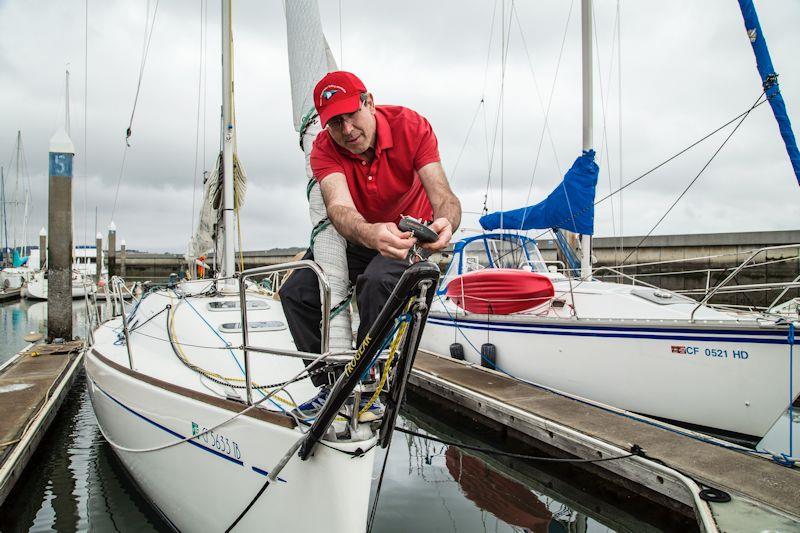
Related Articles
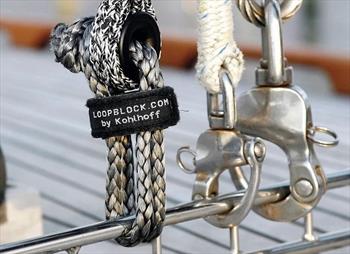
Yachting World
- Digital Edition

Spirit 72DH review: latest modern classic stunner
- Toby Hodges
- November 2, 2023
A multipurpose design, a dual purpose yacht. Toby Hodges sails Spirit Yachts’ latest stunner, the Spirit 72DH and finds a new benchmark in modern classic quality
Product Overview
Price as reviewed:.
Clear the headland three miles south of Guernsey’s St Peter Port and the depth and conditions can change abruptly, as you transition from sailing around tidal banks into the English Channel proper and realise there’s suddenly nothing between you and 2,000 miles of North Atlantic swell. This became quickly apparent as we headed out on a reach, the Spirit 72DH Gwenyfar II in full stride at double figures, and I noted the rapidity with which the waves were building.
These soon became 3-4m ocean rollers, as thick as they were tall but with a goodly period between each crest. The Spirit took it effortlessly, the motion kind enough to become quite addictive. Heeled over at full waterline, her spoon bow cut through the swell and speed remained steady. When we then tacked and had the swell on our quarters she remained well behaved, just more sporty, the lightweight side of her modern spirit of tradition build coming into play.
It was a performance as graceful and intoxicating as her bewitching looks.
While it was the performance and handling which really transformed this yacht in my eyes, it’s no doubt the aesthetic attributes that will put the majority under a Spirit’s spell. A Spirit’s looks have long been their talking point – you don’t twice get to be a Bond yacht based merely on practical merits. The Ipswich yard has since found a sweet spot in this larger size range, in particular this Spirit 72DH design, for which it is currently building its third hull. While it still allows for plenty of flexibility with interiors, having the design and engineering in place creates a known base, a yacht which the yard knows it can reproduce to the highest standards.
The Spirit 72DH is also designed to appeal to a broad spectrum of experience and sailing preferences, with systems and layout options that allow for a paid hand. The deck layout is deliberately uncluttered, while intuitive push-button hydraulics and a tidy winch layout help make it manageable with a small number of crew.
The first example, Spirit of Anima , launched a year ago, is used for Med family cruising and charter and has a bright, modern interior with separate crew cabin. This second is more classic Spirit in style inside and lets the craftsmanship reign. It’s a dual-purpose boat, designed to be competitive with a full race rig and sails, yet be capable of both comfortable local cruising and an Atlantic circuit. And the third is a cross between the two layouts but reportedly with a starkly different interior finish.

The 72DH at full pace, upwind. Photo: Waterline Media/Spirit Yachts
All in the eye
Despite their different visions, the proud owners of both the first two Spirit 72DHs have talked of how their yachts share an inherent ability to relax them when on board.
In fact, as we made our way down to St Peter Port, it quickly became clear the owner of Gwenyfar II is infatuated with his yacht, despite having owned a Spirit before (a Spirit 63DH). He’d already moved the boat out to a neighbouring anchorage that morning, perhaps because we may have struggled with the depth over the marina sill. But maybe, I wondered, because first impressions and the ability to see a yacht’s lines really count, particularly when the sheer – the line it all started with for this owner – is so important.
I have rarely met someone so passionate about his yacht. We sat together in the whisky drinking armchairs in the saloon, as he pointed out the details and features, the fixtures and finishes, even the movement, smell and noise which brings this timber creation to life. It appeals to all the senses.
In particular, he wanted the finish to be kept minimal to expose and highlight the woodwork artistry. The hull’s sipo ringframes and yellow cedar planking are displayed wherever possible. So this yacht is very much in line with the original Spirit ethos, with an oyster white hull, gleaming mahogany brightwork and this uncluttered architectural interior. Or is it? While the majority of Spirit owners have raced as well as cruised over the yard’s past 30 years, Gwenyfar II ’s owner wanted to turn the dial up on the yacht’s competitive ability.

Under spinnaker the Spirit 72DH proved engaging to sail at a variety of angles and sea conditions. Photo: Waterline Media/Spirit Yachts
Five years ago his Spirit 63DH stole the show at its Southampton debut, a yawl which was commissioned purely for cruising. Having owned a handful of thoroughbred cruising yachts until that point, he the got the taste for racing. The first Gwenyfar (meaning ‘white spirit’ in Welsh) was not set up for that nor easily modified, so a longer, comparatively lighter and faster Spirit beckoned.
‘ GII ’, as she became affectionately dubbed, needed to be a dual purpose boat. “She is built around the capacity to race, look good and go fast, and then transform to cruising,” the owner explains.
The rig is pivotal to achieving this. The high modulus carbon Hall Spars mast is super clean, with just one VHF antenna and the mast wand permitted, and sports a Park Avenue boom and EC Six carbon rigging. And then there are the sails – stacks of them – all built by OneSails. She carries a set of white heavy duty radial cut HydraNet sails for cruising (which we sailed with) or a full wardrobe of black 4T Forte composite race sails. In the words of skipper Simon Hughes, “we were allowed to go to town with the rig and sails”.
A carbon spinnaker pole helps allow for a range of symmetric spinnakers, plus there’s a remotely controlled high speed padeye for a Code 0. A removable inner forestay rigs to a padeye on the forward watertight bulkhead, and provides the option for a soft hanked staysail to help reduce the sailplan centrally in the most efficient manner. “The staysail makes a big difference,” says the owner, adding: “We had a storm jib up for 10 days on our return trip across the north Atlantic on GI.” Another neat feature is the extra track which extends into the mainsail track to allow a storm trysail to be rigged.
Hughes helped skipper the previous 63DH, particularly on long passages, and was instrumental in the commission of the Spirit 72DH with regards to the rig, systems and electronics. He also helped put together a friendly race crew, some of whom joined us for our sail.

Signature styling: low, curved deckhouse with integrated fan windows on top helps provide light and space inside. Douglas fir decks and gleaming brightwork make for an elegant deck. Photo: Waterline Media/Spirit Yachts
With full main set and genoa unfurled in 15-19 knots north-westerly we set out at pace in the flat water between Guernsey and Herm. Reaching off to the south we were soon into that impressive ocean swell, making 9.5-10 knots at 110º to the apparent wind, with waves heading across our starboard bows.
Pleasure sailing the Spirit 72DH
There were nine of us in the cockpit and I wondered why so many were aboard. But it was during that first leg as we hit open water and I caught their collective expressions of unmasked joy that it dawned on me – they were coming out for the sheer pleasure of sailing this yacht (granted, it also gave us the option of flying a spinnaker).
This deep cockpit provides security. The Spirit has the length and shape to handle those conditions with ease and carries her way through the waves, putting you at ease. I imagine it would have felt distinctly different out there on a smaller, flightier yacht with modern full bow sections.
While the Spirit 72DH’s cockpit benches are really wide and may be better suited for sun lounging than sitting comfortably, the vertical coamings allow you to sit up high and from here or the helm there is good visibility forward over the low deckhouse.

To be as rewarding to sail in both directions is rare. Photo: Waterline Media/Spirit Yachts
As we tacked to reach off back towards Sark, I appreciated the ability to control the main easily from the wheel. The speedo, which had varied between 8.5-9.5 knots depending on the tide when fetching, rose to double figures when broad reaching and hit 11.5 knots with wave assistance.
The Spirit 72DH boasts good balance and communication. While I’ve enjoyed sailing many Spirits on the breeze, it’s rare to find a design that’s as rewarding to sail in both directions. The large mahogany wheel, sunken into a well in the cockpit sole, is directly linked to the carbon blade and stock via chain and wire. I preferred to sit to windward at heel, straddling the wheel with a foot braced on the pedestal, as it’s a bit of a stretch to see the telltales from within the cockpit to leeward.
The aft winches are dedicated to the mainsheet, the central winches for the spinnaker and the forward ones for the jib or guys, with the latter kept manual to avoid over tensioning. The hydraulic Cunningham, vang, backstay and outhaul are all controlled on a pushbutton panel by the mainsheet trimmer/winch or on a remote control. A hydraulic cylinder under the cockpit bench moves the traveller, and the helmsman can easily reach the controls for this and the mainsheet winch. The central winches also have foot switches so the kite trimmer can stand and trim. Halyards, meanwhile, all exit at the mast base on to two powered winches each side on GII, including a high speed three-speed model.
We plugged in the masthead spinnaker in the Little Russel channel and squared the pole back so the big white kite could pull us along at graceful 9 knots (up to 11 knots SOG) in 16 knots, running at 160°apparent. It felt like a timeless classic yacht scene, yet it was also clear to see how such a sail could be handy when racing in these notoriously tidal waters, as it allows you to run so much deeper. But it does need many hands to get it up and down!

The wheel is crafted from sipo, as is the binnacle, which has instruments flush mounted. Note the traveller track and mainsheet controls each side, plus the displays set into the deckhouse windows. Photo: Waterline Media/Spirit Yachts
We dropped the kite through the companionway as it started to get lumpy in the larger swell, with Hughes proving an expert influence, calmly directing proceedings.
Decks are kept particularly clean with the aid of removable padeyes. In its continued search for a teak replacement, Spirit has tried Lignia decks and is currently using Douglas fir, traditionally favoured for its straight grain, which looked like a commendable alternative on GII.
The guardrails are also removable for classic style racing. Handrails had yet to be fitted on the coachroof but were due to be added before the Southampton Boat Show debut. Even so, the side decks are narrow by the deckhouse and have a camber to them which makes it a little unnerving moving forward.
A retractable bow thruster is offset to port and uses a neat 48V pancake motor Lewmar adapted to fit the boat’s sail locker. The starboard side of this locker is large enough for the trysail, staysail and spinnaker. Meanwhile, two lazarette lockers under the aft decks form the bulk of the deck stowage. There’s enough space for a couple of spinnakers on one side and a F-Rib tender to the other, while both feature useful outboard trays for spare lines.

Huge, deeply fiddled central work surface of the galley forms a social heart. Photo: Waterline Media/Spirit Yachts
Tranquil experience
The fun of sailing this yacht is arguably matched by the pleasure of just being aboard. Whether gathering for drinks in the cockpit, socialising around the galley or soaking up the peace in the saloon, it is a boat you are happy to linger on. ‘Tranquil and simple’ was the brief for the interior. Gwenyfar II is designed to be at anchor in this part of the world. The owner has no interest in Med sailing – he might do a Baltic and Caribbean season, but otherwise it’s for local cruising and racing.
Other than the aesthetics, it’s the layout, particularly in the deckhouse, and the attention to detail that stand out. Typically a deckhouse may accommodate a pilot berth or raised navstation. Here it forms the social heart of the boat, a galley area around which people can congregate as they would in a modern home, and still provides a proper chart table with views.
The signature fan windows built into the deckhouse pour natural light over the galley, the traditional butterfly deck hatch does the same for the saloon, adding ventilation at anchor too. And the lighting, including indirect and subtle uplighting, helps celebrate the planking.
Obviously there are compensations that need to be made with a classic shape with long overhangs. So they haven’t tried to pack in the accommodation; instead, the three cabins are inviting and well appointed. The question for prospective owners concerns how much they want to sail with a paid hand and whether to accommodate them in these cabins or in a separate crew cabin and thereby lose some valuable deck stowage.

A practical chart table to starboard. Photo: Waterline Media/Spirit Yachts
The overhangs also restrict mechanical space. So the engine is contained under the galley unit as its shaft exits the hull in front of the companionway steps. This helps centralise weight, while the layout around this engine bay and the tanks each side of it has been done intelligently. A day tank gravity feeds the engine, while the fuel filter and manifolds are easy to access quickly.
Smart details are numerous, while behind the scenes and in the bilges everything is sealed and finished properly, down to wooden trays below the fuel filters to prevent any diesel drips fouling the locker. A surprising niggle then is the lack of soft closing mechanisms on drawers and lockers.
The items that can be removed, such as crockery and cutlery, have all been designed to lift out easily in one unit. When racing, the companionway doors fold away flush, the galley taps are removable and the whole area is protected by custom covers, allowing the crew to pull spinnakers down through the companionway without fear of damaging the woodwork.
GII has the larger galley option. To stand looking out at a horizon view through the deckhouse windows while making a brew or preparing food is special. Watch our full video to see all the details and features such as the customised knife drawer, the marinised Miele induction cooker and a bespoke tea tray for kettle and mugs which fits neatly into a locker.
Directors’ chairs can join the saloon table to help seat 10, with stowage for them in a locker below the bulkhead cabinet. The two comfortable leather armchairs, separated by a lift-top cabinet for the single malts, are the choice place to sit and admire the structures. Spirit used carbon fibre to help support the highly loaded areas, which helped shave 1,200kg in stainless steel around the ringframes.

The spectacular forward master. Photo: Waterline Media/Spirit Yachts
Another two reading chairs in the forward master cabin offer privacy, and there is also a writing desk with fold out mirror to help it double as a vanity table. The owner points out the marquetry and neat pen stowage built within: “I didn’t ask for it but Spirit takes it upon themselves to go the extra mile.”
At 6ft 3in he has full standing headroom up to a double berth, which can be separated by lee cloths when cohabiting with other crew. Otherwise furniture was deliberately kept to a minimum. No full wardrobes for example, just half height lockers and deep drawers. The ensuite is a good size, with rainfall shower, low wattage towel rail, and a bevel-edged mirror neatly set into the front face of the locker.
The excellent navstation has good visibility of the sails and a nice mix of modern and traditional systems. There is touchscreen control for the C-Zone digital switching plus a manual switch panel for primary systems. GII also has a full B&G H5000 racing system, the 12in Zeus touchscreen for which can double as the house computer.
Power management is based around Victron’s Quatro smart inverter charger, which specialises in distributing power when and where needed, says Hughes, in this case from the 1,000Ah lithium battery bank (below the forward saloon berth). It also helped enable the choice of a more compact genset below the companionway.

The identical aft cabins both have generous ensuites with separate showers. Photo: Waterline Media/Spirit Yachts
GII’s traditional fossil fuel based system seems noticeably at odds with Spirit’s recent launches and drive for renewable power. The yard has recently produced a foiling electric motorboat, the extraordinary 111 Geist with electric drive, and a 65 and 68 with hybrid drives.
“We probably wouldn’t even do a 44 or 52 now with a diesel drive,” says marketing director Helen Porter. However, those doing ocean cruising still tend to choose more traditional power systems.

The ‘row away factor’ of the Spirit 72DH is significant. Photo: Waterline Media/Spirit Yachts
Spiritual world
The Spirit 72DH is the definitive modern classic. It has gorgeous traditional lines mixed with modern materials and appendages to make it relevant, fun and practical today, and crucially the layout and systems to make it repeatable. GII is also used just as the classic gentleman’s cruiser once was, when owners raced with friends or crew who valued the experience of sailing such a yacht, then cruised with family or friends.
The true spirit of this Spirit design is all about how it affects you personally. For me the 72DH shone from behind the wheel at sea. From past experience a Spirit revels in flat water, but going through, across and with an Atlantic swell showed this yacht has special qualities. For Gwenyfar II ’s owner it’s all about how it made him feel.
That’s what the beauty of wood and Spirit’s master craftsmen and women bring: lines you’ll never tire of, joinery that calms you and that added quality that gives the yacht a soul.
If you enjoyed this….
Yachting World is the world’s leading magazine for bluewater cruisers and offshore sailors. Every month we have inspirational adventures and practical features to help you realise your sailing dreams. Build your knowledge with a subscription delivered to your door. See our latest offers and save at least 30% off the cover price.
BOW SPIRIT Vittoria Yachts
- Inspiration
BOW SPIRIT has 5 Photos
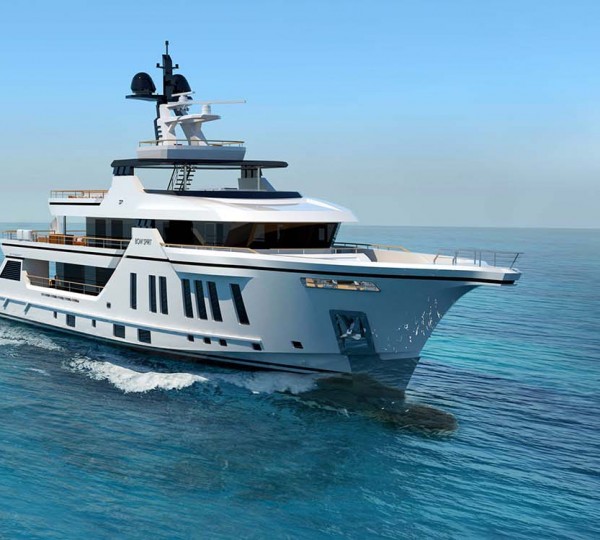
Vittoria Shipyard News
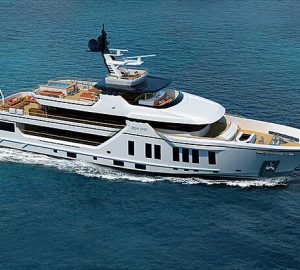
Introducing the 54-metre explorer yacht ...
Similar yachts.
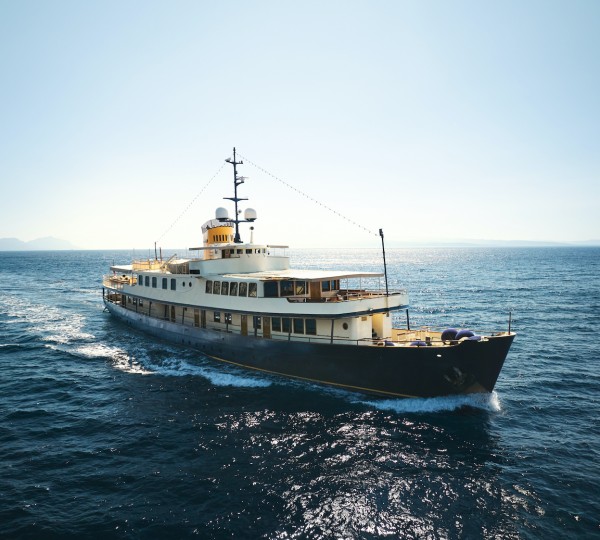
SEAGULL II | From EUR€ 110,000/wk
- Yachts >
- All Yachts >
- All Motor Yachts Over 100ft/30m >
If you have any questions about the BOW SPIRIT information page below please contact us .
Luxury motor yacht BOW SPIRIT from Italian shipyard Vittoria is a 54m explorer yacht with a delivery date of 2023. Her versatile and spacious outdoor areas can be configured in a variety of ways depending on guests needs, while her main deck swimming pool is sure to impress. Her accommodation sleeps up to 12 guests, with a professional crew of 8 on board to look after every detail.
NOTABLE FEATURES OF BOW SPIRIT: ~Two deck swimming pools ~Incredibly spacious outdoor living areas ~Crows nest for 360 views ~Air conditioning ~WiFi
With strong, clean lines, this incredible luxury yacht is a real head turner. Her unique shape is reminiscent of a fishing boat, with the large lower deck forming an incredible beach club. This deck houses a large swimming pool, with ample room leftover for sun loungers and cushions. Just a few steps down is the ocean and easy access to watertoys, creating a wonderful spot for relaxing and taking a dip.
Above on the upper deck is a vast seating area, where guests can enjoy al fresco meals or a few cold beverages together. The space is partially shaded by the flybridge deck above, meaning outdoor enjoyment is available in any weather.
Above on the flybridge deck is yet another swimming pool. With sunbeds on either side as well as a seating area forward, this is another great spot for relaxing while having a soak. A central stairwell leads up to the ‘crows nest,’ where guests can enjoy incredible 360 views of the surroundings.
BOW SPIRIT Specifications
The interiors have yet to be revealed by the shipyard.
Her twin MTU 16V2000M61 engines allow for a top speed of 16 knots and a cruising speed of 14 knots.
Yacht Accommodation
The accommodation capacity is for 10 – 12 guests, with cabin format and details yet to be revealed by the shipyard.
Amenities and Extras
We do have available further amenity, owner and price information for the 54m (177') yacht BOW SPIRIT, so please enquire for more information.
BOW SPIRIT Disclaimer:
The luxury yacht BOW SPIRIT displayed on this page is merely informational and she is not necessarily available for yacht charter or for sale, nor is she represented or marketed in anyway by CharterWorld. This web page and the superyacht information contained herein is not contractual. All yacht specifications and informations are displayed in good faith but CharterWorld does not warrant or assume any legal liability or responsibility for the current accuracy, completeness, validity, or usefulness of any superyacht information and/or images displayed. All boat information is subject to change without prior notice and may not be current.
Quick Enquiry
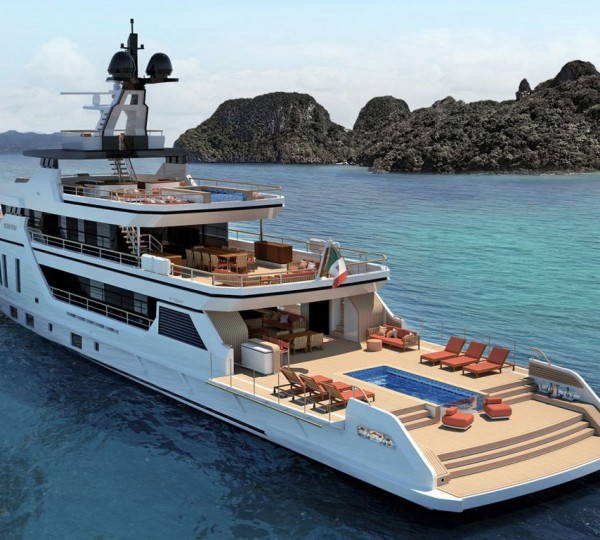
PERSEFONI I | From EUR€ 199,000/wk
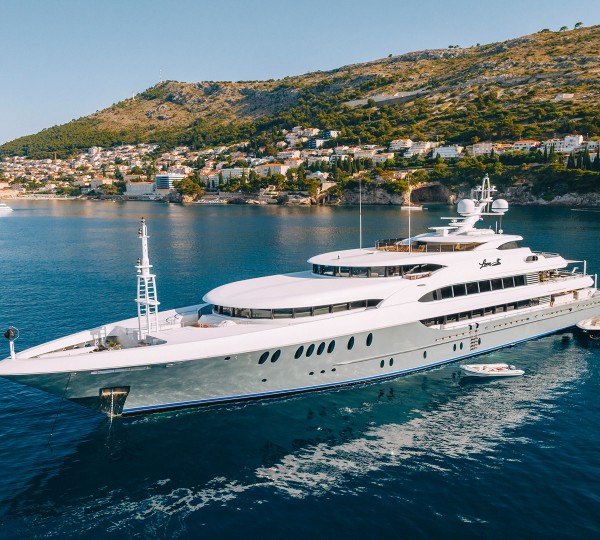
LADY BETH | From EUR€ 325,000/wk
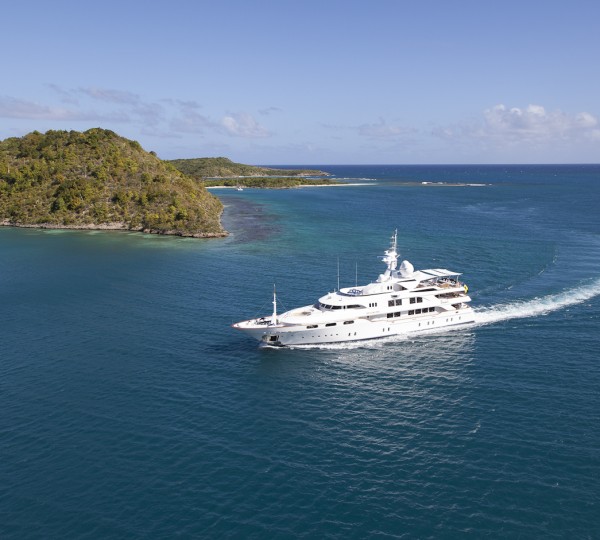
Starfire | From US$ 288,000/wk
- New Sailboats
- Sailboats 21-30ft
- Sailboats 31-35ft
- Sailboats 36-40ft
- Sailboats Over 40ft
- Sailboats Under 21feet
- used_sailboats
- Apps and Computer Programs
- Communications
- Fishfinders
- Handheld Electronics
- Plotters MFDS Rradar
- Wind, Speed & Depth Instruments
- Anchoring Mooring
- Running Rigging
- Sails Canvas
- Standing Rigging
- Diesel Engines
- Off Grid Energy
- Cleaning Waxing
- DIY Projects
- Repair, Tools & Materials
- Spare Parts
- Tools & Gadgets
- Cabin Comfort
- Ventilation
- Footwear Apparel
- Foul Weather Gear
- Mailport & PS Advisor
- Inside Practical Sailor Blog
- Activate My Web Access
- Reset Password
- Customer Service

- Free Newsletter

Pearson Rhodes 41/Rhodes Bounty II Used Sailboat Review
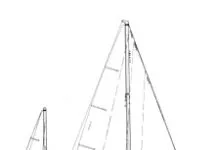
Hallberg Rassy 42

How to Perform Your Own Pre-Buy Inspection

Beneteau 323 Used Boat Review


How Does the Gulf Stream Influence our Weather?

Can You Run a Marine Air-Conditioner on Battery Power?

Preparing Yourself for Solo Sailing

Your New Feature-Packed VHF Radio

Practical Sailor Classic: The Load on Your Rode

Anchor Rodes for Smaller Sailboats

Ground Tackle Inspection Tips

Shoe Goo II Excels for Quick Sail Repairs

What Oil Analysis Reveals About Your Engine

An Unusual Sailboat Shines a Light On A Sustainable Future

Is It Time to Get an Electric Dinghy Motor?

Bottom Paint 30-Month Update

Battle of the Teak Cleaners — Snappy Teak-Nu vs. Star Brite

New Seacocks for the Offshore Sailor

Bottom Paint Care

Are E-bikes Worth the Extra Weight and Cost?

How to Handle the Head

How to Select Crew for a Passage or Delivery

Preparing A Boat to Sail Solo

Re-sealing the Seams on Waterproof Fabrics

Waxing and Polishing Your Boat

Reducing Engine Room Noise

Tricks and Tips to Forming Do-it-yourself Rigging Terminals

Marine Toilet Maintenance Tips

Learning to Live with Plastic Boat Bits
- Sails, Rigging & Deck Gear
Extending the Bow: Are Add-on Sprit Kits Worth It?
Bowsprits are back with a vengeance: practical sailor compares the latest aftermarket kits..
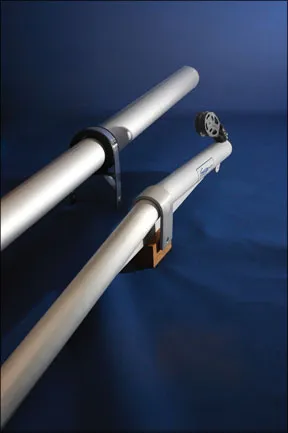
Already de rigueur with many performance-oriented sailors, easy-to-handle lightweight sails are gaining popularity with cruisers. And setting a gennaker, asymmetric spinnaker, or a new rendition of an old-fashioned drifter/reacher is easier than ever before. The big question is: Will the cost of a mini-bowsprit actually be worth the effort and expense involved?
After a series of sea trails with sprits, spinnaker socks, and free-luff furlers, weve come to the conclusion that the technology works well, but whether this is a valid investment depends on how important it is to you to keep sailing in light conditions. With fuel prices scraping the stratosphere, efficiency in light wind may be a bigger priority than it was in the past.
In our recent look at furlable code sails, drifters, gennakers, and asymmetric spinnakers (“ A New Twist on Furlers ,” March 2008), we proved that an efficient “no foil” furler made hoisting and dousing a large light-air sail almost a walk in the park. We also were quick to recognize that setting the sail a couple of feet ahead of the stem, on a pole, sprit, or other projection, improved both performance and the sails handling characteristics. With this in mind, we decided to delve deeper into the issue of sail-tack projection, and evaluate the differing approaches to tacking the light-air sail forward of the bow of the boat.
Much of the credit for mainstreaming this renaissance in bowsprits goes to Rod Johnstone, designer of the J-boat line and creator of the metric Js (130, 120, 105, etc.) that hit the water with a built-in, extendable free-standing pole meant to replace traditional spinnaker-handling gear. The new approach simplified foredeck gymnastics and significantly streamlined the chute-handling routine. Even so, cruisers and many racers rightfully balked at the prospect of having a big hole near the bow of their boat and a noticeable proboscis built into the topside. At the same time, shorthanded round-the-world racers were flocking to triple sets of furling headsails with light-air sails the size of circus tents set on an articulating tubular bowsprit.
This approach to sailing efficiency has now launched into the mainstream as Selden, Forespar, Forte, Sparcraft, and others have designed aftermarket kits suitable for a wide range of sailboats. All these kits have one aim: Move the tack point of any light-air sail ahead of the stem. Each design faces similar challenges, specifically the need to handle side loads on a tubular structure and the ability to adapt to a wide range of deck geometry and pre-existing obstacles.
Bowsprit engineering
In order to better understand the forces associated with modern sprit technology, a bounce or two on a playground seesaw offers some insight. On both the seesaw and the bowsprit, the location of the fulcrum and the load applied at one end of the lever arm determines what happens at the other. Its important to note both the strength and the direction of the pull when contemplating the force vectors involved. Like any lever, the longer the stress arm becomes, the more load is imposed on the fulcrum-and the stronger both the bowsprit tube and its support members must be.
Traditional bowsprits incorporated a bobstay and even whisker stays to reduce the bending loads at the fulcrum. Just as rigging turns side loads on a mast into compression loads, a bowsprits bobstay and other wires do much the same. However, many modern mini-sprits actually behave more like a free-standing mast, resisting sail loads through stiffness rather than being kept in column by a bobstay. This requires thicker or higher-modulus materials able to withstand the point load induced at the fulcrum, usually a collar-like fitting mounted on the deck.
Our furler tests revealed that close reaching with a Code 0-type sail (a specialized lightweight sail designed for sailing tighter angles than an ordinary asymmetrical spinnaker) or even the use of a more conventional light No. 1 genoa, tripled and even quadrupled the tack load. In Practical Sailors view, this sort of use mandates the need for a bobstay. Those planning to use the sprit solely for reaching purposes with an asymmetrical spinnaker or gennaker only need a bobstay if they intend to use the rig in heavy air conditions. Most manufacturers set extension length and/or wind speed limits for their sprits.
On some boats, the advantage of a sprit is offset by the amount of clutter it adds to the foredeck. Working around a windlass, bow roller, cleats, and the anchor well can turn an easy installation into a real challenge. Fortunately, these sprits come with versatile hardware kits and installation guidelines that make sense. Theres usually a need to add topping and backing plates, as well as address the concern about spreading the loads.
The installation is best handled by a pro rigger, but a skilled do-it-yourselfer should be able to handle the job. It is critical that the deck core be sealed at any new penetrations, and any new points of stress in the deck or hull are conservatively reinforced to cope with the loads of the sprit kit.
The Forespar Banana Sprit uses a smaller-diameter sprit tube with a thick wall section, and incorporates a downward bias and a bottom gusset to add stiffness. The latest version has been extended at both the inboard and outboard ends. It the features tangs on top and bottom, which makes attaching an endless line furler and a bobstay quite simple.
When using the sprit without a furler option, the Banana Sprit leads the line aft through an optional top mounted block-as opposed to the internal tack line in the Selden sprit (see below). For added reinforcement, the manufacturer offers an optional attachment bracket along with a bobstay chainplate fitting.
Theres an upside and a downside associated with the sprits shorter length: Forward projection is limited, but the units compact size makes it very locker-stowable.
Bottom Line: Though its deck fittings and design are not as elegant as some of the others tested, it will hold favor with those who have limited space at the bow.
Based in Ledyard, Conn., Forte Carbon Fiber Products is a composite spar builder that has gained solid ground with competitive sailors. Its sprit kit package comes with nicely machined saddle-type deck fittings and webbing loops for tack attachment.

Ralph Naranjo
The diameter of carbon sprits tended to be a little larger than the alloy alternative. However, the quality of the composite tubes we looked at met an aerospace standard, and for those with extra cash to spare, the carbon sprit option is worth a second look.
Bottom Line: The weight savings of a carbon fiber sprit is significant, but so is the price increase over aluminum.
Selden makes aluminum and carbon fiber sprits. It offers three different diameter tube sections for its aluminum kits. Each comes complete with end fittings and mounting bracket options. The tack line runs through the sprit, so the outboard end acts as a guide for a tack line. The sprit also has webbing attachment points at the top and bottom.
An owner can choose either a stainless steel mounting bracket designed to fit an anchor roller, or a similar fitting designed for direct deck attachment. The well-thought-out kit includes two inboard end-clips that allow the sprit to simply be retracted and clipped for storage. In cases where an anchor locker lies beneath the sprit, the tube can be easily pulled completely free and set in a second deck ring and inboard end-clip that is set outboard near the rail.
Bottom Line: This kits combination of simple but rugged design and user-friendly installation options moved it to the top of the pack. It gets the Practical Sailor Best Choice pick.
Similar to the Selden sprit, the Sparcraft system Practical Sailor evaluated is an alloy, free-standing sprit featuring a tack line through the center of the tube. The kit contains a stainless-steel mounting ring with a high molecular weight plastic sleeve insert that helps reduce chafe at the tube and the tendency for the tube to crimp. Sparcraft also offers a carbon-fiber version.
Various mounting options are available, including a temporary bobstay attachment and the ability to rig the sprit for the heavier loads imposed by a Code 0 or close-reaching in light air. The pole can be retracted for storage or removed and placed elsewhere.
Bottom Line: This sprit is very similar to the Selden, using a slightly greater tube diameter for equal-sized boats, and costing nearly double what the Selden costs.
Free standing vs. Bobstay Assist
As mentioned before, tack loads create an upward force that can be offset by a bobstay. The wire can be attached to an eye-fitting bolted through the thick solid fiberglass stem at a point well below the headstay chainplate but above the waterline. The bracket or welded tabs on the outboard end of the sprit effectively join the tack and bobstay into a single bow-string that puts compression loads on the arrow-the sprit. Hardware at the inboard end needs to be up to this compression loading. However, with a bobstay attached, some sprits can be used as a tack point for a code sail as well as for off-the-wind reaching with an asymmetric spinnaker.
With a free-standing sprit, the load at the fulcrum collar is upward, and theres a tendency to crimp the sidewall of the tube. At the inboard end of the pole, the force is downward rather than aft because theres much less compression on the sprit. Adding a bobstay causes the upward crimp load at the collar (fulcrum) to lessen, but a new compression component is introduced at the support structure located at the aft end of the pole.
Adding more sail to the pointy end of the boat will improve light-air performance, and the furling systems and sock technology available today make it easier than ever to manage more sail area. But it is tempting to go overboard, and add too much sail area and a too-complex system to handle it.
When all was said and done, our nod of approval went to Selden for its simple, versatile, alloy free-standing sprit, a unit thats intended for gennakers and asymmetric spinnakers. The hardware versatility makes it user-friendly, and its cost-effective price point adds to its appeal.
For those with a tight squeeze on the foredeck, Forespars Banana Sprit offers a recommended alternative. Its projection lengthprovides a sniff of clear air and a convenient tacking point for a gennaker or asymmetrical spinnaker. Forespar, does not recommend using the sprit for Code 0-type sails.
The best solution varies from crew to crew and will depend upon how much you care about performance and how much effort you’re willing to put forth to get that performance. A mini-sprit for an asymmetric or gennaker that slides forward into place and aft for easy storage will have the widest appeal. A more permanent installation with a bobstay adds light-air on-the-wind sailing capability and makes sense for those with reasonably efficient sailboats.
Carbon sprits are pricey, but the tube technology is terrific and the weight savings will probably appeal to those who go to the effort to keep neither chain nor heavy anchors stored at the bow.
- Bowspirit Details
- Practical Sailor Value Guide: Add On Bowsprits
- The Perfect Spirit Remains Elusive
RELATED ARTICLES MORE FROM AUTHOR
Leave a reply cancel reply.
Log in to leave a comment
Latest Videos
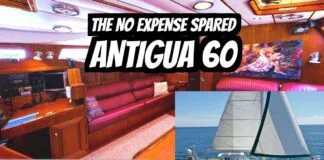
The No Expense Spared Antigua 60 Cruising Sailboat Soolaimon

How To Buy Sails – With Joe Cooper

Bavaria C42: What You Should Know | Boat Tour

Universal Diesel Engines – What You Should Know
- Privacy Policy
- Do Not Sell My Personal Information
- Online Account Activation
- Privacy Manager
Practical Boat Owner
- Digital edition

Adding a bowsprit to your boat
- Rupert Holmes
- July 7, 2023
Nearly every new boat has a bowsprit, but what about older yachts? Rupert Holmes looks at what is available on the market for owners of older vessels

A custom made stainless steel sprit may cost around £2,000 for a 35ft boat and can be made so that it doesn’t add to clutter on the foredeck. Credit: Rupert Holmes Credit: Rupert Holmes
The performance benefits of today’s reaching sails in light airs , together with their ease of handling, are so beneficial that almost every new sailing yacht has a bowsprit from which efficient asymmetric spinnakers and Code 0s can be flown.
At the same time, more and more older boats are sprouting sprits for the same reasons.
Some of these are propriety units, with prices starting at around £700, while others are custom-made, costing around £1,500 to £2,000 for stainless steel sprits suitable for a 35ft boat, but double that or more for carbon fibre.
On the other hand, many others are home-made, using materials as diverse as short lengths of scaffold pole to salvaged sections of broken windsurfer masts.
Continues below…

Headsail furling: how to choose the right system
There is a huge range of headsail furling gear on the market. Rupert Holmes gives some tips for choosing the…

Electric winches, handles and furlers – a buyer’s guide
Maybe you want to spend more time sailing single-handed, or perhaps you’re reaching the age when winching up the mainsail…

9 expert sailing techniques to help you sail better, faster and safer
The best way to get a better boat is to improve the one you already have, I have long believed.…
In all cases the first step is to decide whether it will be used only for nylon spinnakers without furling gear.
This is because sails with furling gear, especially Code 0s, have much higher luff loads.
This means the whole set up needs to be much stronger and a bobstay from the end of the sprit to the bow of the boat near the waterline may be needed to counter the vertical forces involved.
A sprit used for a Code 0 will also be subject to greater compression load, so will need to be stronger and in a few cases may also require side stays.
A second decision point is whether a fixed sprit is acceptable, or whether you need one that can be retracted – to avoid incurring additional mooring fees, for instance.
The third is whether or not anchor handling will be affected.
The best sprits on new boats have excellent integrated anchor rollers and stowage, but this can be harder to achieve in a retrofitted arrangement, unless it’s one that sits on deck.
Bowsprits on the market
Seldén bowsprit

Seldén’s four aluminium and five carbon deck-mounted sprits are popular and easy to fit.
They can be used with nylon sails on boats from 1.5 tonnes displacement up to 26 tonnes.
They’re also rated for use with a Code 0 on smaller boats up to 6.7 tonnes loaded displacement (aluminium version) or 9.3 tonnes (carbon).
This style of sprit is easy to retract or remove to be stowed elsewhere, but the fittings will still clutter the foredeck.
Prices: from around £700 to £2,500 Contact: seldenmast.com
Facnor bowsprit

Facnor produces a range of four aluminium sprits for boats from 25-57ft that can be used with asymmetric spinnakers from less than 60m2 up to 150m2 and, Code 0s of 37m2 to 105m2, providing a bobstay is fitted in the latter case.
Prices: £700-£1,300 Contact : facnor.com
Trogear bowsprit

Trogear’s neat carbon sprits are typically fixed to the hull, just below deck level at the bow and hinge upwards when not in use.
The six model range suits boats from 25-70ft.

Prices: £1,040 to £3,500 Contact: trogear.com
Enjoyed reading Lifeboat and working boat conversions?
A subscription to Practical Boat Owner magazine costs around 40% less than the cover price .
Print and digital editions are available through Magazines Direct – where you can also find the latest deals .
PBO is packed with information to help you get the most from boat ownership – whether sail or power.
- Take your DIY skills to the next level with trusted advice on boat maintenance and repairs
- Impartial in-depth gear reviews
- Practical cruising tips for making the most of your time afloat
Follow us on Facebook , Instagram and Twitter

- CLASSIFIEDS
- NEWSLETTERS
- SUBMIT NEWS

Trogear Bowsprits - Installing Above Existing Bow Rollers
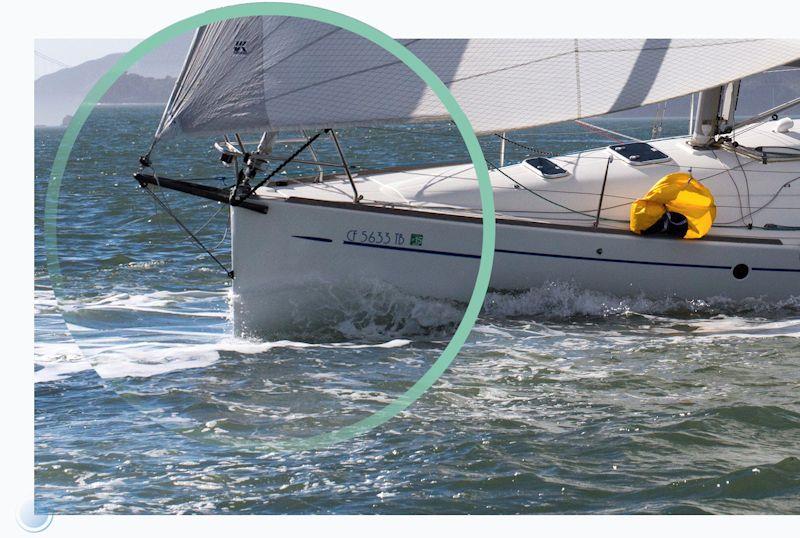
Related Articles

Upcoming Events
- 0 No item in your cart
- SUBSCRIPTION
- Classified Ads
- Technical Specifications
- Destinations
- Address book

- All the magazines
The bowsprit in all its forms
The reappearance of bowsprits on fast, up-market boats has influenced the demand for this advantageous spar. On this one, fixed and in carbon, a genoa and a 180m² gennaker are attached!
On production boats, the bowsprit is more often than not in aluminum, and the sail often remains in place during the cruise. A strop fixed to the crossbeam martingale allows the vertical tension to be adjusted and thus its longitudinal axis.
This bowsprit is directly incorporated into the forward crossbeam. Its fittings allow a sail on a furler to be rigged, and the line which passes inside serves to adjust the height of the tack of the asymmetric spinnaker.
Certain models are made to measure. This one, triangle-shaped, allows the compression forces on the forward crossbeam to be better spread. It also helps when rigging the sails, as you can walk on it.
The bowsprit can get in the way once you have arrived in port. This one is fitted on a pivot, which allows it to be lifted and folded away, as long as the bobstays can be adjusted, so it can lift.
Made-to-measure, up-market models in carbon exist, from certain specialists. They are fitted as an extension of a beam taking the compression from the nacelle, so that bigger sail areas can be used.
This model, in high-tech carbon is a little technological wonder, which requires a sophisticated installation. It is retractable and incorporates some very compact hydraulic furlers in the tube!
The production builders, such as here Fountaine Pajot, don’t hesitate to offer this equipment as standard, as it has so many advantages.

Article published on 20/09/2018
By Olivier Barret
published in n°162 nov. / dec.
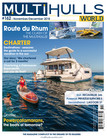
With modern sail plans, the bowsprit has become essential. But aboard our modern sailing boats, it can have several forms, and be in aluminum, carbon, pivoting, retractable… And fitting one on your boat - is it possible? Here is an analysis, so you will know everything about the bowsprit...
Create a notification for "Technical"
We will keep you posted on new articles on this subject.
While they monopolized the bows of every ship at the end of the 19 th and the beginning of the 20 th century, this spar disappeared little by little as time went by, before returning in large numbers in the last twenty years. On our cruising multihulls, it reappeared at first aboard fast boats, where it allowed the center of effort of the headsails to be moved forward. But the geometry of recent sail plans justifies its use again on the most placid production cruisers. In general, genoas have lost much of their overlap, so as to make tacking easier. They have even sometimes become self-tacking. But even when the mast has been moved aft – as on certain very recent models – when sailing off the wind, on a broad or beam reach, they are no longer powerful enough. A gennaker or code D becomes essential, to keep up a good average speed. But if this powerful sail is rolled up just in front of the leading edge of the genoa (which is most often the case, remember we are on a cruising boat!) it greatly disrupts the air flow at the luff, drastically reducing the sail’s efficiency. And equally when the genoa is rolled up, it disrupts the gennaker. Finally, rolling these sails can be hampered if they are too close, not to mention during gybes when the chafing on the genoa can quite simply cause the maneuver to fail.
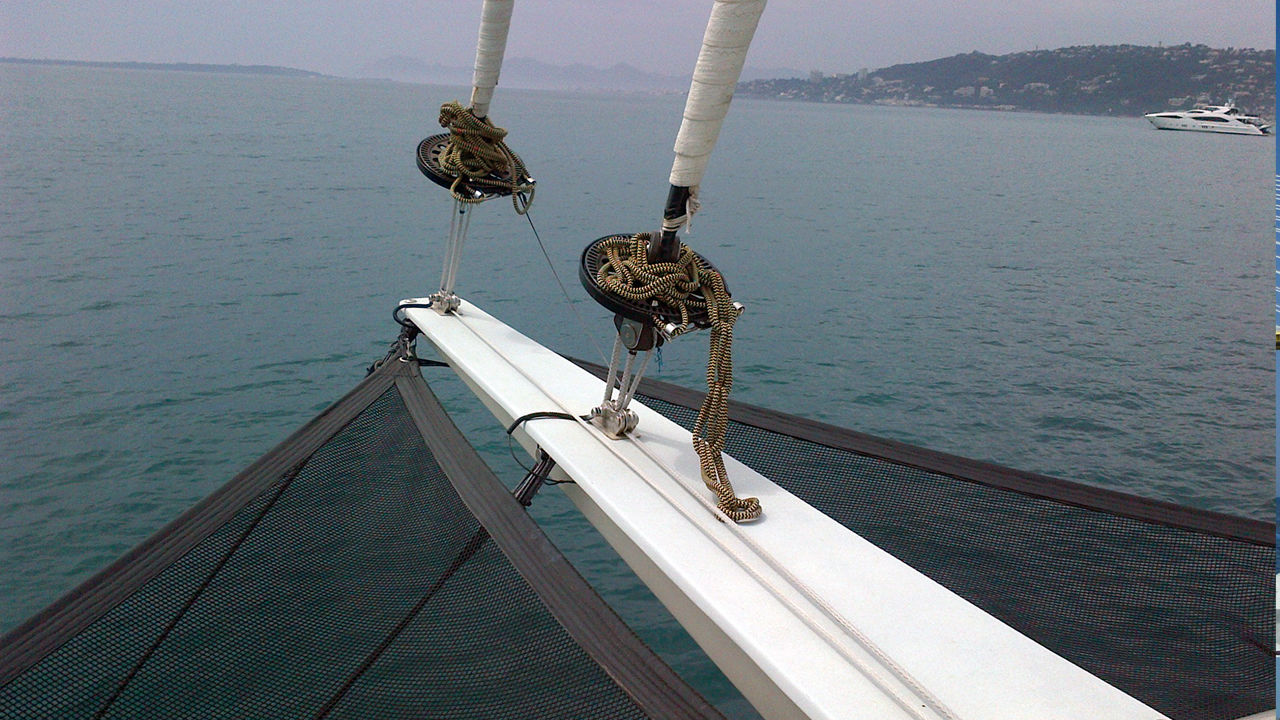
An advantageous solution
The simplest solution therefore consists of moving the tacks of these sails further apart, thanks to… a bowsprit. And the advantages are then numerous. Firstly, the area of the downwind sails can be increased especially as the foot is going to be longer. Then, the sails no longer get in each other’s way and the air flow is completely laminar. But we can also have them working together, which is very effective on a reach as it creates a venturi effect between the two. Finally, for points of sailing further off the wind, the bowsprit has the effect of distancing the leading edge of the asymmetric spinnaker and allows you to easily sail ten degrees further downwind, compared to a spinnaker attached to the forward crossbeam. You can thus easily sail at up to 150-155 degrees to the apparent wind. As for the maneuvers, the fluidity is much greater and the clearance between the sails avoids wrapping the spinnaker round the genoa. Thanks to the bowsprit and bigger, better-performing headsails, sailing downwind and/or in light breezes becomes fun and resorting to the engines is delayed.
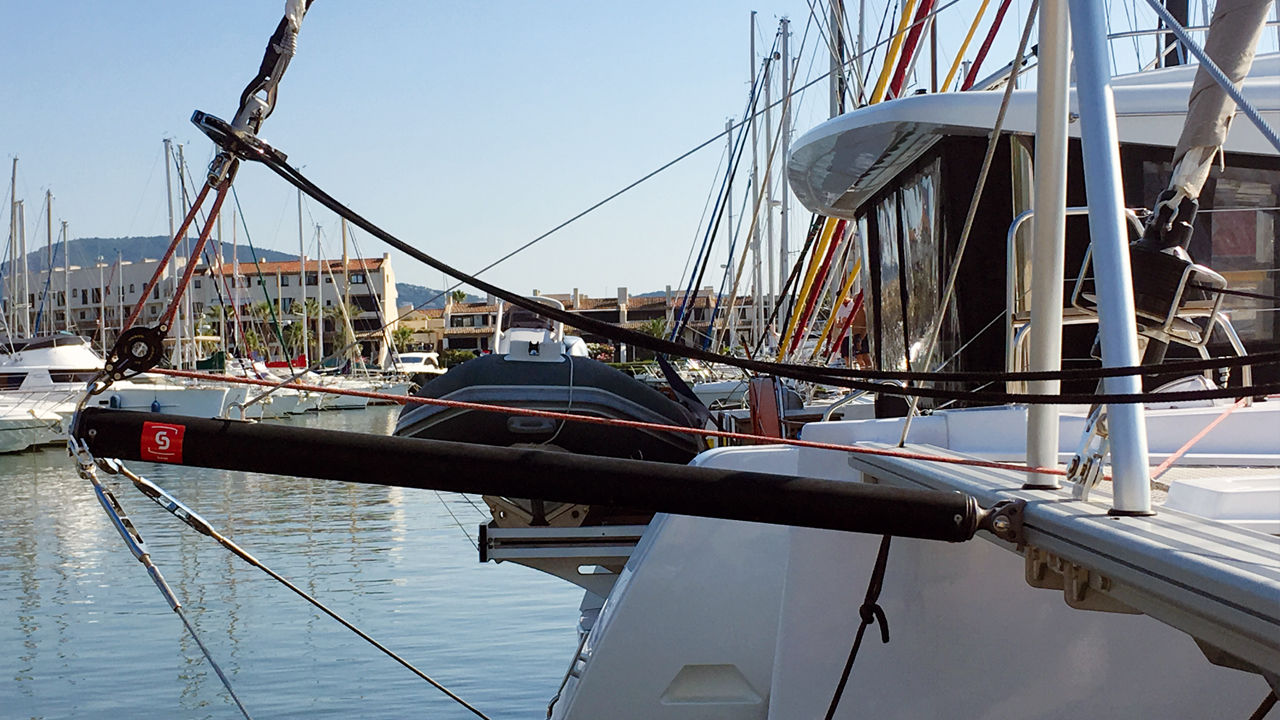
Installation on the forward crossbeam
Forward crossbeams in aluminum are reinforced with an internal module for the compression. You can therefore fit a bowsprit with no problems, as long as it remains of a reasonable size. For a 45-foot boat, an 80 to 100 cm bowsprit is the right ratio. The major manufacturers, such as Sparcraft, Selden, Soromap, offer bowsprits in kit form, with various sections in aluminum or carbon. For an 80 to 100 cm length, the section will be around 80 to 90 mm. Fitting it to the bow of a trimaran requires ...
Subscribe to Multihulls World and get exclusive benefits.
Did you like this article ?
Share this article
Most-read articles in the same category.
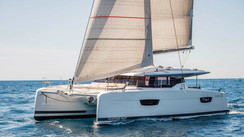
Bending on sails - Everything you need to know for making the most of your multihull
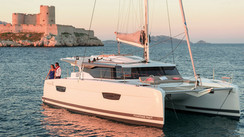
Maintenance - Saildrive legs
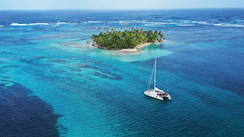
Anchoring - All you need to know about bridles
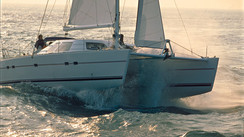
Forepeaks - How do you make the best use of them?
Everything you need to know about trampolines
Davits and arches : Getting your dinghy back aboard your multihull
What readers think.
Post a comment
No comments to show.
Follow us on
Vous avez ajouté " " à vos favoris., vous avez supprimé " " de vos favoris., in order to add this article to your favorites, please sign in..

- 54.17 M 14 MPH 1 6
Currently under construction and due for delivery in 2023, BowSprit is the first ever yacht from Vittoria, a shipyard with a strong history of producing both military and commercial yachts.
Considering the shipyard’s background, it is not surprising that BowSprit is a robust, strong and luxurious Explorer yacht. Just by looking at this visually unique yacht, you can see the effort that has been put in, especially when looking at her sleek lines and huge vertical windows located forward. Not to mention her cruising capabilities which includes Trans-Atlantic range along with Four Zero Speed Stabilisers.
BowSprit’s tri-deck layout gives guests a variety of outdoor areas to enjoy across her 54 meters of length. A couple notable features include her helipad, a must have for any worthy Explorer yacht along with an expansive sun deck complete with Jacuzzi and Crow’s nests, an ideal observation deck. Her grand beach deck is also a sight to behold, considering its size and charming swimming pool.
Comfortably accommodating up to 12 guests across six cabins, BowSprit can be customised to a five-cabin layout thanks to removable panelling, the epitome of versatility. The master cabin is located forward and has natural light streaming through the huge vertical windows. Other noteworthy features include folding balconies on the main deck, giving that Infinity design look, an owner’s study and a separate Crew passageway – perfect way to privately enjoy a cruise.
BowSprit has been specially designed to maximise the hull length while keeping her below 500GT. Combining this with her sleek exterior lines and impressive selection of facilities, this yacht is the perfect companion to explore all corners of the world.
Main Features:
- Tri-deck World Cruiser yacht
- Incredible range with Trans-Atlantic capabilities
- 12 Guests in 6 cabins (5 cabins if required)
- Maximised length below 500 GT
- 4x Zero Speed Stabilisers
- Tender garage located between cabins and engine room, acting as noise reducer.
GUESTS: 12|CABINS: 6|CREW: 8
Specifications
Exterior design.
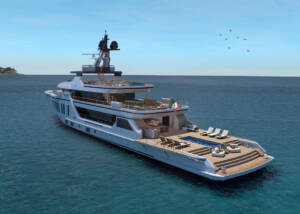
Interior Design
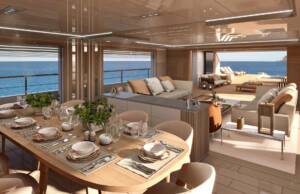
Ocean Marine QA © 2024 All Rights Reserved
× You are using an outdated browser. Please upgrade your browser to improve your experience.
We Ship Worldwide! | FREE SHIPPING! for US Continental orders over $99. Click for details.

Shopping Cart
Your cart is currently empty..
FREE SHIPPING! for US Continental orders over $99 click for details

Sailboat Bowsprits

If you are looking for some real speed going downwind, then you are going to need a good Bowsprit for your Gennaker or asymmetric Spinnaker. The bowsprit is a spar extending forward from the bow, it provides an anchor point for the forestays, allowing the fore-mast to be stepped farther forward on the hull. These spars are quick to add and remove from the foredeck after installing the deck mounting brackets and when in the inactive position, gives you a clear foredeck when arriving at the docks.
MAURIPRO Sailing is committed to offering Sailboat Bowsprits for the best sailboat equipment online. Get the most out of your next sailing experience by shopping here!
MAURIPRO Sailing, your direct access to Bowsprits and all your other sailing and boating needs.
Copyright © 2024 MAURIPRO Sailing LLC.
- Share full article
Advertisement
Supported by
News Analysis
Fresh Off Defeat in Speaker Fight, Greene Relishes the Chaos She Wrought
The hard-right congresswoman from Georgia failed spectacularly in her bid to depose Speaker Mike Johnson. But for a figure who sees her power in creating chaos, the loss was the point.

By Annie Karni
Reporting from the Capitol
As Republicans and Democrats booed her loudly Wednesday when she called a snap vote on the House floor to oust Speaker Mike Johnson, Representative Marjorie Taylor Greene, Republican of Georgia, paused briefly to narrate the drama to viewers back home.
“This is the uniparty, for the American people watching,” Ms. Greene sneered, peering over her glasses at her colleagues like a disappointed schoolteacher.
Ms. Greene went on to take her shot at Mr. Johnson and miss, an outcome that she knew was a certainty. The vote to kill her attempt to remove him was an overwhelming 359 to 43 — with all but 39 Democrats joining Republicans to block her and rescue the G.O.P. speaker.
The move buoyed Mr. Johnson, confirming his status as the leader of an unlikely bipartisan governing coalition in the House that Ms. Greene considers the ultimate enemy. And it isolated Ms. Greene on Capitol Hill, putting her back where she was when she arrived in Washington three years ago: a provocateur and subject of derision who appears to revel in causing huge headaches for her colleagues .
“Hopefully, this is the end of the personality politics and the frivolous character assassination that has defined the 118th Congress,” Mr. Johnson said after the vote.
The word “hopefully” was doing a lot of work.
If Ms. Greene’s goals in Congress were to chair a powerful committee or to build up political capital to drive major policy initiatives — or if she had to worry about drawing a political challenger — this all would constitute a major problem for her. But those have never been the incentives that have driven the gentle lady from Georgia, whose congressional career has been defined by delighting her base and stoking anger on the right more than legislative achievement or political pragmatism.
Ms. Greene hails from a blood-red district where 68 percent of voters supported former President Donald J. Trump in 2020, allowing her to operate with relative impunity in Congress, without fear of a challenge from the right or left. She has further insulated herself politically by donating vast sums to electing Republicans to the House, quietly backing her colleagues even as she picks fights many of them would rather avoid.
So even as it became clear over the last week that she would fail in her quest to depose the speaker, Ms. Greene saw an upside in insisting on the exercise. A vote would offer concrete proof that Mr. Johnson had made himself beholden to the Democrats — a dynamic that has been clear for months as he has partnered with them to pass a host of major bills , including one to send aid to Ukraine — and that many Republicans were going along with what she regarded as a betrayal of the party’s principles.
“I’m thrilled with the whole thing,” Ms. Greene said in an interview on Thursday, sounding upbeat after her spectacular defeat. “Even the booing from both sides — I fully expected it.”
Even if Ms. Greene felt defeated or isolated, she would be exceedingly unlikely to acknowledge it. Her power derives in large part from her irrepressible attitude and her Trumpian instinct to double down rather than retreat in the face of failure.
On Wednesday evening, center-leaning Republicans tried to create as much distance from her as they could, fearful that association with her theatrics would alienate voters in their districts turned off by the seemingly endless chaos in the House.
“All she wants is attention,” said Representative Carlos Gimenez, Republican of Florida. “Today, we shut her down. Our entire conference said, ‘Enough is enough — we don’t need to hear from her anymore.’”
Representative Mike Lawler, Republican of New York, referred repeatedly to Ms. Greene as “Moscow Marjorie” as she dangled her threat to oust the speaker. “Moscow Marjorie has clearly gone off the deep end,” he said on Wednesday.
But if Ms. Greene is now on an island in her party, she hasn’t been there long, and there’s likely a rescue boat en route to bring her back to the mainland. Shortly after arriving in Congress in 2021, she was stripped of her committee assignments by Democrats — 11 Republicans voted with them — and was treated like a pariah by many in Washington. But over the past two years, Ms. Greene has been elevated by her party’s leaders, valued as a top adviser by former Speaker Kevin McCarthy , leaned on as a helpful fund-raiser by vulnerable Republicans and publicly hailed as a dream teammate by center-leaning lawmakers in her party.
“Marjorie Taylor Greene, she is so kind,” Representative Jen Kiggans, a vulnerable Republican from Virginia, said at an event last year before the ouster attempt. “She has been very nice to me.” Of Ms. Greene and other bomb throwers in her party, she said, “I have nothing bad or, you know, different to say about any of these people. They’re on my team, right? They are my teammates. We all want the same things.”
Mr. Trump, who had privately prodded Ms. Greene to move on rather than pursue her vendetta against the speaker and maneuvered to save Mr. Johnson, made it clear she remains on his good side despite ignoring his advice. He waited until the House had turned back her ouster attempt on Wednesday night to post a message on social media urging Republicans to block it. And before he praised Mr. Johnson, he wrote: “I absolutely love Marjorie Taylor Greene. She’s got Spirit, she’s got Fight, and I believe she’ll be around, and on our side, for a long time to come.”
If that’s what abandonment by her party looks like, who needs an embrace?
“He’s not mad at me at all,” Ms. Greene said Thursday of the former president. “I talked to him plenty. He’s proud of me.”
Democrats, for their part, aren’t willing to let Republicans run away from Ms. Greene, the most famous Republican in the House, so quickly.
Missy Cotter Smasal, a Democrat challenging Ms. Kiggans in coastal Virginia, said that “when voters hear her comments calling Marjorie Taylor Greene a teammate, they are astounded and disgusted.”
Even though Ms. Kiggans voted to kill Ms. Greene’s effort on Wednesday night, Ms. Smasal moved quickly to try to use the mutiny attempt as a cudgel against her G.O.P. opponent.
“Jen Kiggans in office enables the chaos of Marjorie Taylor Greene,” she said on Thursday. A spokeswoman for Ms. Kiggans did not respond to a request for comment.
Justin Chermol, a spokesman for the Democratic Congressional Campaign Committee, said: “When the Republicans lose their majority in November, it will be because the so-called moderates let Marjorie Taylor Greene be their party mascot.”
And Representative Hakeem Jeffries, Democrat of New York and the minority leader, wasted little time in sending out a fund-raising email detailing how Ms. Greene “threatened to throw Congress further into chaos, crisis and confusion.”
Ms. Greene laughed off the idea that her actions would help elect Democrats this fall — the argument that everyone from Mr. Trump to Representative Jim Jordan, Republican of Ohio, had used as they tried to discourage her from moving to oust the speaker.
“Republicans will turn out in droves for Trump,” she said. Using an acronym for “Republican in name only,” she continued, “Then they’re going to move down and see that RINO Republican they’ve elected time and time again — who didn’t impeach Biden, who didn’t do anything on the border — they’re going to see that guy and they’re going to cuss him under their breath and skip his name.”
Ms. Greene said Thursday that she didn’t care much whether she was isolated or not.
“If I’m on an island,” she said, “I’m doing exactly what I came here for.”
“I’m very comfortable ebbing and flowing with my party,” she added. “I can be their biggest cheerleader, supporter, defender, donor. I’ve given something like half a million to the National Republican Campaign Committee. I am a team player.”
Over the past two election cycles, Ms. Greene has sent a total of $725,000 to the party’s campaign arm, according to the nonpartisan campaign finance research group Open Secrets, a vast sum for a rank-and-file member like Ms. Greene.
In 2023, Ms. Greene gave the maximum contribution in more than a dozen vulnerable House Republican races, including to colleagues who represent districts President Biden won in 2020, such as Representatives David Schweikert of Arizona and Mike Garcia of California.
On Thursday morning, Ms. Greene made it clear she wasn’t finished tormenting Mr. Johnson just yet.
“Speaker Johnson is the Uniparty Speaker of the House!” she crowed on social media.
Annie Karni is a congressional correspondent for The Times. She writes features and profiles, with a recent focus on House Republican leadership. More about Annie Karni
A Divided Congress: Latest News and Analysis
Biden Impeachment: A crop of freshman Democrats on the House Oversight Committee has countered Republicans’ allegations against President Biden with attention-grabbing charges of their own .
Marjorie Taylor Greene: The hard-right congresswoman from Georgia failed spectacularly in her bid to depose Speaker Mike Johnson. But for a figure who sees her power in creating chaos, the loss was the point .
Aviation Bill: The Senate passed legislation to reauthorize federal aviation programs and put in place new safety measures and consumer protections, at a moment of intense uncertainty and disruption in the air travel system.
Ted Cruz: The Republican senator from Texas, who made a name for himself trying to shut down the government over the Affordable Care Act, took on an unfamiliar role as a critical player in pushing through the aviation bill .
Antisemitism Hearing: A Republican-led House committee turned its attention to three of the most politically liberal school districts in the country, accusing them of tolerating antisemitism, but the district leaders pushed back forcefully .
- MOSCOW SPIRIT
Crude Oil Tanker, IMO 9418602
- VesselFinder
The current position of MOSCOW SPIRIT is at South America West Coast reported 6 days ago by AIS. The vessel MOSCOW SPIRIT (IMO 9418602, MMSI 311000449) is a Crude Oil Tanker built in 2010 (14 years old) and currently sailing under the flag of Bahamas .
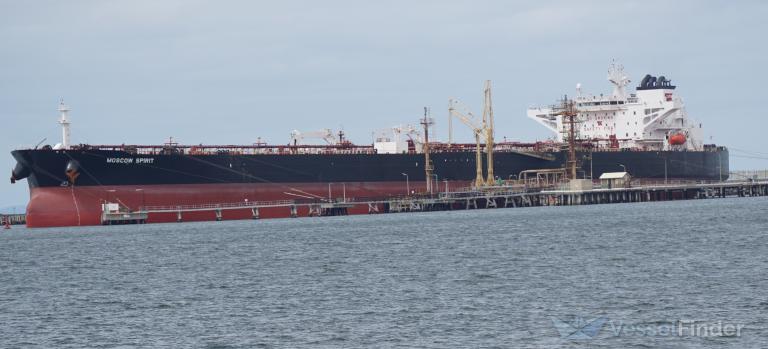
Position & Voyage Data
Map position & weather, recent port calls, vessel utilization, vessel particulars, similar vessels, related news.
MOSCOW SPIRIT current position and history of port calls are received by AIS. Technical specifications, tonnages and management details are derived from VesselFinder database. The data is for informational purposes only and VesselFinder is not responsible for the accuracy and reliability of MOSCOW SPIRIT data.

IMAGES
VIDEO
COMMENTS
Bowsprit. The bowsprit of a sailing vessel is a spar extending forward from the vessel's prow. The bowsprit is typically held down by a bobstay that counteracts the forces from the forestays. The bowspirit's purpose is to create anchor points for the sails that extend beyond the vessel's bow, increasing the size of sail that may be held taut.
The Spirit P70 looks like a boat from the 1920s, ... So, we combined the flared bow and tumblehome stern from our Spirit P40 with the 1930s style of our sailing yachts, and applied it to a larger ...
Overall, Bow Spirit will feature a length of 54.17 m (177.7 ft) and a max beam of 9 m (29.5 ft), at its widest. But with this machine, it's not about the size, but rather the luxury, and that's ...
He liked the design of the existing Spirit power boats, so the design team combined the flared bow and tumblehome stern from the P40 with the 1930s-style of Spirit's sailing yachts and applied it to a larger motor yacht design. Deep bulwarks were added to allow guests to move around the decks safely, particularly when underway out at sea.
To right this wrong, a bow rollers started protruding farther and farther forward. As an added benefit these new quasi-sprits created an excellent potential tack point for reaching sails forward as well. As for those aforementioned outboard chainplates, they may do a good job of reducing loads on the mast and rigging.
Sprit length is defined by the distance so the luff rope can clear the pulpit. 1. Using the spinnaker halyard, determine the best length for the bowsprit - this is usually decided by your pulpit design. I could have mounted the bowsprit forward or aft of the forward edge of the pulpit.
Posted on 23 Nov 2023 Winterising a boat - useful tips from Upffront.com Dave Proctor explains how to avoid some unpleasant surprises next spring Winterising the boat is a common task for many boat owners, regardless of where your boat is located. For some, in milder conditions, it means keeping everything dry and tidy, but for many the need ...
Fuel: 800lt / 176gal. Sail area/displacement ratio: 22.9. Disp/LWL ratio: 194. Design: Sean McMillan. A multipurpose design, a dual purpose yacht. Toby hodges sails Spirit Yachts' latest stunner ...
Yacht Accommodation. The accommodation capacity is for 10 - 12 guests, with cabin format and details yet to be revealed by the shipyard. Amenities and Extras. We do have available further amenity, owner and price information for the 54m (177') yacht BOW SPIRIT, so please enquire for more information.
Currently under construction and due for delivery in 2024, Bow Sprit is the first-ever yacht from Vittoria Yachts, an Italian shipyard with a strong history of producing both military and commercial vessels. Considering this background, it is not surprising that Bow Sprit is a robust and strong explorer yacht with true polar cruising pedigree. Her reinforced ice belt allows her to explore ...
The list for this particular project was: Do no harm! (minimize the need to drill holes) Use the existing anchor roller. Ensure sturdy construction to handle moderate winds. Achieve a lower cost than commercial bowsprit products. Ensure the final product is attractive (no "DIY" look) Make it easy to install and remove.
Most manufacturers set extension length and/or wind speed limits for their sprits. On some boats, the advantage of a sprit is offset by the amount of clutter it adds to the foredeck. Working around a windlass, bow roller, cleats, and the anchor well can turn an easy installation into a real challenge. Fortunately, these sprits come with ...
Prices: £700-£1,300. Contact: facnor.com. Trogear bowsprit. Trogear's neat carbon sprits are typically fixed to the hull, just below deck level at the bow and hinge upwards when not in use. The six model range suits boats from 25-70ft. Prices: £1,040 to £3,500. Contact: trogear.com.
2022 Vittoria Yachts Bow Spirit 178ft. €22,500,000 (US$24,643,032) $204,135/month. Adria, Rovigo. Loans. Payment Calculator. Basics. Year: 2022: Make: Vittoria: Model: ... the lower your interest rate will be. The best yacht interest rates are reserved for the most well qualified borrowers. A well qualified borrower will have an excellent ...
The use of the Trogear bow roller brackets means the sprit operates clear above the channel / anchor. This does mean you lose a small amount of available luff length, for the code zero or asymmetric spinnaker. However, on most cruising boats this is not an issue. In addition to the bracket options, there are many different possible variations ...
For a 45-foot boat, an 80 to 100 cm bowsprit is the right ratio. The major manufacturers, such as Sparcraft, Selden, Soromap, offer bowsprits in kit form, with various sections in aluminum or carbon. For an 80 to 100 cm length, the section will be around 80 to 90 mm. Fitting it to the bow of a trimaran requires ...
Bow spirit. Italy. 54.17 M 14 MPH 1 6; Currently under construction and due for delivery in 2023, BowSprit is the first ever yacht from Vittoria, a shipyard with a strong history of producing both military and commercial yachts. ... Just by looking at this visually unique yacht, you can see the effort that has been put in, especially when ...
I took all this in as Casey, prone on the deck, inched forward with a rope lashed to the detachable cutter stay. I winced each time the bow plunged into a wave, envisioning the sprit breaking completely and flying back toward us, complete with its pair of 60-pound anchors, immediately followed by the mast snapping at the lowers and probably bringing the mizzen down on our heads as well.
The bowsprit is a spar extending forward from the bow, it provides an anchor point for the forestays, allowing the fore-mast to be stepped farther forward on the hull. These spars are quick to add and remove from the foredeck after installing the deck mounting brackets and when in the inactive position, gives you a clear foredeck when arriving ...
The new yacht Kismet has a jaguar bowsprit, too, although in a different interpretation. Instead, it's a leaping jaguar (below). PHOTO: Steffen Mayer. Notably, this is the third time that Khan has collaborated with Lürssen. Besides the above-mentioned Kismet, the first Kismet was from 2007. She came in at 223 feet (68 meters).
Q88 LLC is the leading SaaS technology provider to the maritime industry. Our partnership with the world's leading ship owners, charterers, ship managers, agents and brokers has provided us insight into how to build solutions for some of the industry's most pressing issues.
Vessel MOSCOW SPIRIT is a Crude Oil Tanker, Registered in Bahamas. Discover the vessel's particulars, including capacity, machinery, photos and ownership. Get the details of the current Voyage of MOSCOW SPIRIT including Position, Port Calls, Destination, ETA and Distance travelled - IMO 9418602, MMSI 311000449, Call sign C6CE5
The hard-right congresswoman from Georgia failed spectacularly in her bid to depose Speaker Mike Johnson. But for a figure who sees her power in creating chaos, the loss was the point.
The current position of MOSCOW SPIRIT is at South America West Coast reported 7 days ago by AIS. The vessel arrived at the port of Talcahuano Anch., Chile on Mar 27, 18:34 UTC. The vessel MOSCOW SPIRIT (IMO 9418602, MMSI 311000449) is a Crude Oil Tanker built in 2010 (14 years old) and currently sailing under the flag of Bahamas.